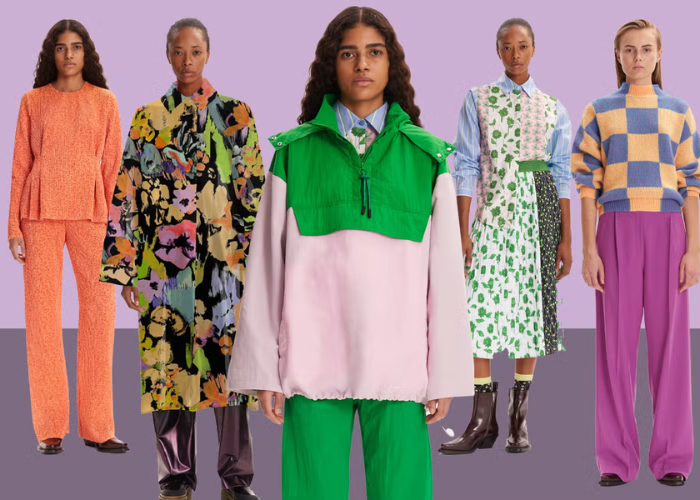
In recent years, the fashion industry has undergone a transformative shift towards sustainability, driven by growing consumer awareness and concerns about the environmental impact of fast fashion. As the world becomes increasingly conscious of the consequences of our consumption patterns, a new paradigm has emerged at the intersection of style and responsibility: chic sustainability. This concept represents the marriage of elegant aesthetics with eco-friendly practices, redefining the way we perceive and engage with fashion. In this article, we delve into the essence of chic sustainability, exploring its significance, key elements, and the trailblazing brands and practices that are shaping the future of fashion.
The Essence of Chic Sustainability
Chic sustainability embodies the fusion of style and ethics, challenging the preconceived notion that fashion must come at the expense of the planet. At its core, this movement seeks to create a harmonious balance between personal expression and environmental responsibility. It champions the idea that being fashionable and caring for the environment are not mutually exclusive but can, in fact, coexist seamlessly.
The essence of chic sustainability lies in embracing quality over quantity. Rather than following the disposable culture that characterizes fast fashion, chic sustainable fashion encourages a shift towards longevity and durability. Investing in well-made, timeless pieces that transcend fleeting trends not only reduces the strain on resources but also contributes to a more sustainable wardrobe.
Key Elements of Chic Sustainability
Ethical Sourcing and Production
Chic sustainability begins with a commitment to ethical sourcing and production processes. Brands that prioritize this element ensure that their raw materials are obtained in a way that minimizes harm to the environment and respects the rights of workers. From organic cotton to cruelty-free fabrics and non-toxic dyes, the materials chosen play a pivotal role in reducing the ecological footprint of a garment.
Moreover, ethical production involves fair wages, safe working conditions, and transparency throughout the supply chain. Brands that champion these practices empower artisans and workers while promoting social justice within the industry.
Circular Fashion
Circular fashion is a cornerstone of chic sustainability, aiming to create a closed-loop system in which garments are designed to be recycled, repurposed, or biodegraded at the end of their lifecycle. This stands in stark contrast to the linear model of production and consumption that dominates the fast fashion industry.
Brands embracing circular fashion design with longevity in mind, ensuring garments are easy to repair, recycle, or transform. This approach minimizes waste and maximizes the utility of each piece, making fashion a continuous cycle rather than a disposable trend.
Slow Fashion
At the heart of chic sustainability is the concept of slow fashion, which advocates for mindful consumption and production. Slow fashion encourages consumers to be more deliberate in their purchasing decisions, investing in fewer but higher-quality items. This not only reduces the demand for constant production but also allows for a deeper connection between individuals and their clothing.
From capsule wardrobes to timeless designs, slow fashion promotes a holistic approach to personal style, focusing on pieces that transcend seasons and trends. In doing so, it reduces the pressure to constantly update one’s wardrobe, ultimately lessening the strain on both resources and finances.
Innovation and Technology
Chic sustainability leverages innovation and technology to reshape the fashion landscape. From alternative materials made from recycled fibers to cutting-edge production techniques that minimize waste, the industry is witnessing a wave of inventive solutions.
For instance, lab-grown textiles and 3D printing are revolutionizing the way fabrics are produced, significantly reducing water and energy consumption. Additionally, advancements in dyeing processes are minimizing water pollution and chemical usage.
Trailblazing Brands and Practices
Several pioneering brands are at the forefront of the chic sustainability movement, setting new standards for eco-friendly elegance.
Stella McCartney
Stella McCartney is a trailblazer in sustainable luxury fashion. The brand is committed to using cruelty-free and sustainable materials, eschewing leather and fur in favor of innovative alternatives. Stella McCartney also emphasizes transparency, regularly sharing information about its supply chain and environmental impact. The brand’s designs exemplify that eco-consciousness doesn’t mean compromising on style or luxury.
Patagonia
Patagonia, known for its outdoor apparel, embodies the ethos of chic sustainability through its commitment to environmental and social responsibility. The brand not only creates durable, high-quality products but also advocates for repair and reuse. Its “Worn Wear” program encourages customers to trade in their used Patagonia gear for store credit, extending the lifespan of each garment.
Reformation
Reformation has gained a cult following for its stylish and sustainable pieces. The brand incorporates eco-friendly materials, repurposed vintage clothing, and responsible manufacturing practices. Reformation is also transparent about the environmental footprint of its products, providing information on water usage and carbon emissions associated with each item.
Renting and Second-Hand Markets
In the era of chic sustainability, renting and second-hand markets have surged in popularity. Clothing rental platforms allow individuals to access high-quality pieces without the long-term commitment, reducing the demand for new production. Second-hand and vintage shopping not only promote individuality in style but also contribute to a circular fashion economy by giving new life to pre-loved garments.
The Road Ahead
Chic sustainability marks a transformative shift in the fashion industry, emphasizing the importance of ethical practices, longevity, and innovation. As consumers increasingly prioritize eco-friendly options and demand greater transparency, brands are compelled to adapt and evolve.
The road ahead involves a collective effort to redefine the norms of fashion consumption. Consumers hold the power to drive change through their choices, supporting brands that align with their values and boycotting those that don’t. By embracing timeless designs, prioritizing quality over quantity, and participating in circular fashion practices, individuals can become active participants in the movement towards a more sustainable future.
Conclusion
Chic sustainability represents a harmonious convergence of style and ethics, reimagining fashion as a force for positive change. As the movement gains momentum, it challenges the conventional narrative that fashion must be environmentally detrimental. By embracing ethical sourcing, circular fashion, slow fashion, and technological innovation, trailblazing brands are demonstrating that elegance and sustainability can coexist. Through conscious consumption and a commitment to responsible practices, individuals have the power to shape the future of fashion into one that is not only chic but also environmentally conscientious.







